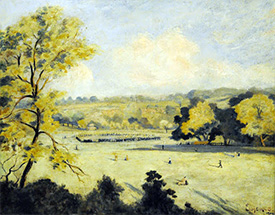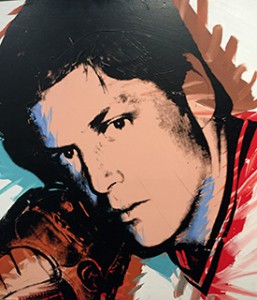Richard Paige — We talk a great deal here about the impact of immersion trips. In the next few days alone, Wabash men will be traipsing across the globe, including destinations like Italy and South Africa.
Rhetoric professor Todd McDorman immersed his Baseball and the American Identity freshman tutorial class in the charming hamlet known as Cooperstown, NY, and the National Baseball Hall of Fame and Museum in mid-October.
I was curious how such a trip might influence a group of guys — baseball fans — a good number of them baseball players, too. It’s not like the guys headed to Rome can actually define themselves as gladiators. Would it make an impact, or be brushed off like that of a bad-hop ground ball?

“I’m a baseball player and I love the sport,” he said. “I didn’t think I’d ever be given an opportunity like that to learn and analyze different aspects of the game; how baseball and America have grown up together and shaped history. It wasn’t what I expected. The game and America are best friends.”
Each had a research project on how a particular subject is presented and influenced by its presentation in Hall of Fame.
Bridgewater threw himself a curve. For a guy who had been to one art museum previously, he chose art and baseball simply because it was different. He spent four hours in the exhibit.
“It was hard at times not to be a fan,” said the right-handed pitcher from Indianapolis. “You get caught up in it, but you have to remember that you are being a critic. It took some time to step back and make those connections.”
He noticed that each work of art had its own interpretation of the game. He started to see the game from a different perspective.
“It gave me a chance to see what the game looked like in different eras and how it’s changed,” Bridgewater said. “The game my grandpa knew and the game my dad knew is different than the game I know.”
One piece resonated strongly with Bridgewater. Louis M. Eilshemius’ “Van Courtland Park” shows the game in its infancy. It reminded him of what made him fall in love with the game. “It was like playing a pick-up game in the backyard with friends,” he said.
The experience opened his eyes to the impact that art has on any subject.

The experience allowed him to draw parallels between pitching and painting. Whether it’s attacking the hitters or the canvas, it’s the approach that is unique.
“Every athlete’s or artist’s approach is different,” Bridgewater concluded. “They might be inspired by something completely different. It’s all interpretation. That’s why I think art and baseball are fascinating. You might get similar results, but the process is so much different.”